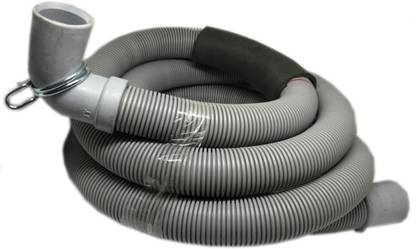There are numerous advantages to investing in an updated washing machine or upgrade from an old model. It’ll clean your clothes more effectively and will make them more efficient. It also promises that it will reduce your laundry cycle time. That means you don’t need to spend all of your time searching for items while still being capable of recollecting important details at home, like the kids’ sporting events. Certain commercials recommend certain brands will make people feel happy washing their laundry. However, this will depend on the individual , and the specifications each model comes with It is evident that these devices work best when properly installed.
Connections to Washing Machine Drain Hoses
There are two ways of connecting your washing machine drain pipe. The first option is installing an appropriate vertical pipe or you could suspend it above an open slop basin for the easy disposal of wastewater.
1. Slop Sink Connection
There are various ways to drain your washer, but the slop basin is the most popular. This arrangement poses numerous risks and potential issues. The water could get in the washer’s filter due to air gaps between the hoses. Any force applied by spin can also damage any device.

2. Drainpipes that are Dedicated Pipe
It is possible to think about a stand-alone connection for your drain hose for your washing machine. The pipes that are specifically designed are able to handle more water than the drains in your kitchen sink and they aren’t as likely to get blocked or get dislodged. They are also located at higher altitudes. This is due to the fact that there is less risk when making use of these pipes instead of joining them together into one indoor line that runs through an opening (or door).
3. Washing Machine Drain Hose Maintenance
While hose connections may seem complicated and messy, once you’ve had it set up correctly, your home is more durable. It is essential to keep the hose’s hygiene and connect it with ease. Install filters on both sides of drain pipes, use homemade filters made from old socks/pantyhose in the event that is needed. This should help prevent lint from getting trapped within the pipes, which could result in obstruction due to the absence of pressure from water pushing through them.
Common Materials for the Machine Drainhose. Machine Drainhose
1. Stainless Steel Braided Drain Line
This material is not as flexible as it appears when it says stainless-steel. It’s wrapped in a plastic coated mesh that is able to withstand physical injuries like twists breaks, and bursts more easily than the other materials on market in the present! Some brands will label their products as ‘burst-free’ to show you just how much care was given to this specific aspect.
2. Rubber Drain Hose
Rubber hoses can be a fantastic option to more expensive plastic and metal hoses. The rubber hose has been in use for many years. These models are made with polyester mesh that is braided as well as rayon to improve durability. However, you’ll need one that has the term “reinforced” in case they’ve been subjected to heavy use. These are made in the way they were originally designed, therefore there is no need to create any modifications.
For more information, click flexible drain pipe for sink